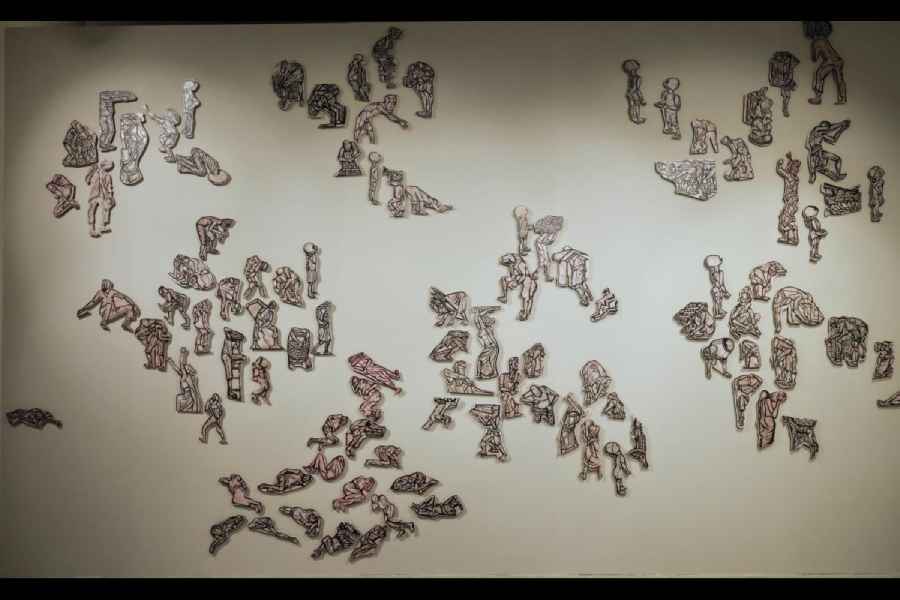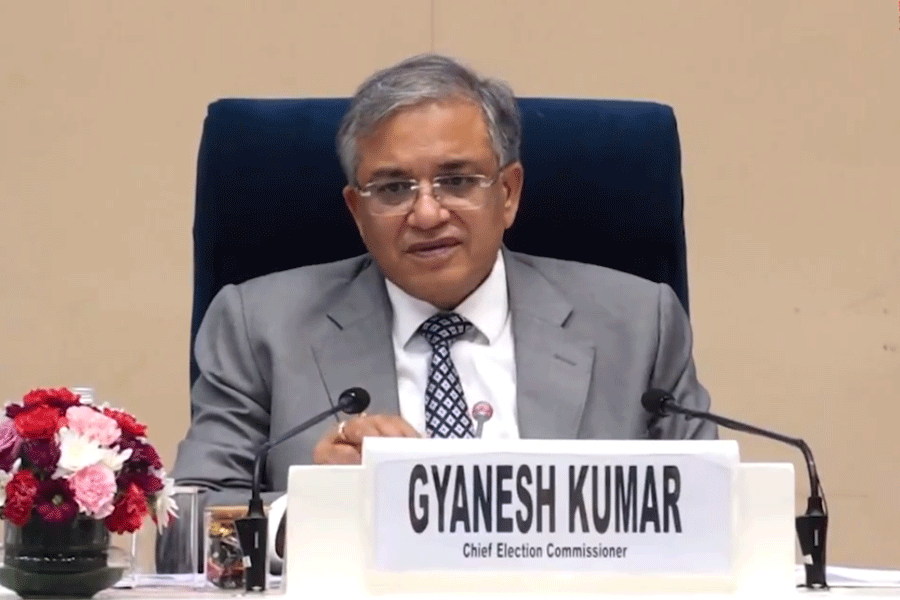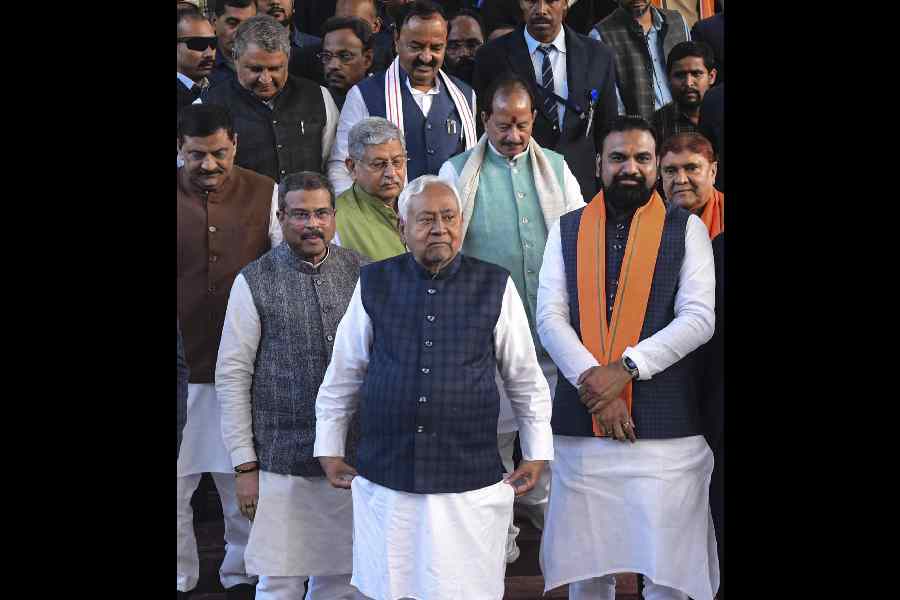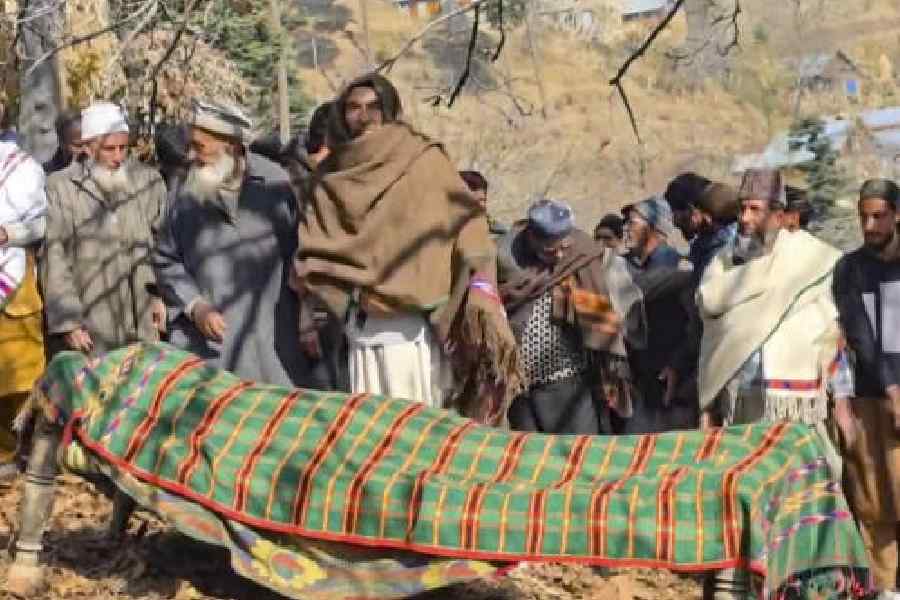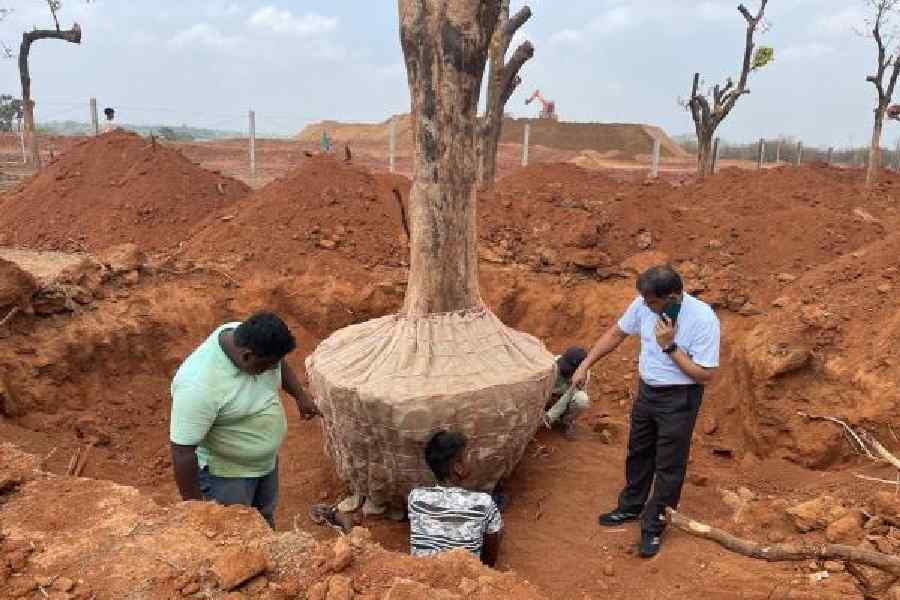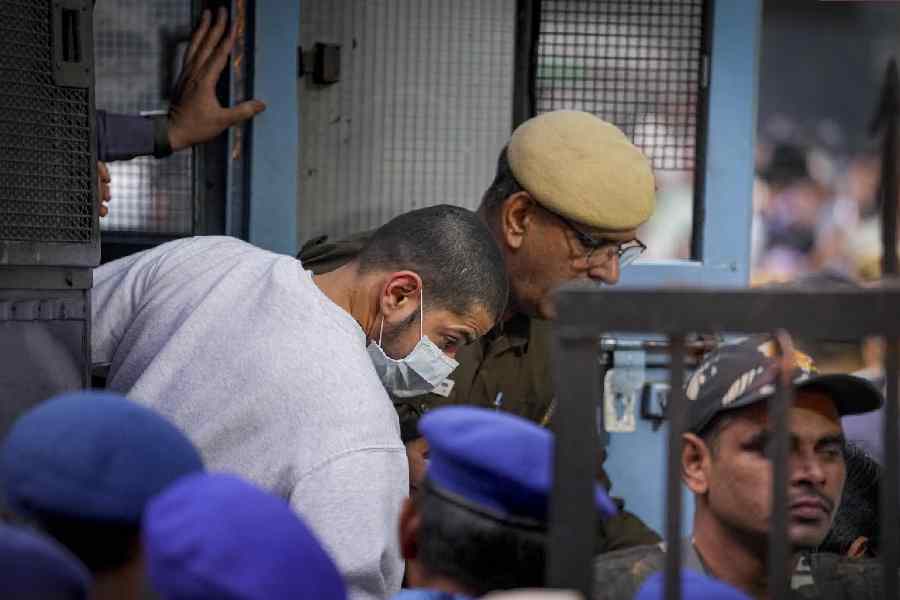Who are the four scruffy children in the first-floor hall of the Birla Academy of Art & Culture? Svikriti, an exhibition of the works of the 12 young award winners of the annual exhibition for 2025-2026 organised by this institution founded in 1967, was being held there. With a cat in tow, they looked like strays in this sanctum of art.
Indeed it was a fleeting illusion. These realistic, chiselled figures of wood were the creations of Bikram Samanta who charred them for the mottled effect. Like the other participants, Samanta has a heightened awareness of social and environmental conditions and his work, like that of the others, originates from this consciousness. There is a certain freshness in their work.
Gyanvant Yadav, from a village in Uttar Pradesh, is from an agricultural background and his jottings — done with pigments derived from soil — installations and performance reflect the hard realities faced by farmers today. Ananya Dalal’s woodcuts are fashioned by her radical vision. Through a process of gene mutation, the branches of trees sprout complex machinery — the fallout of our extreme dependence on technology. Shitangshu Mondal reflects on the changing containers for water with the changing times in his installation. The topicality of the issue he deals with — the gradual death of our sources of water supply and of the drainage system — was painfully evident just as the so-called festive season set in.
Rachita Bhowmik’s delicate etchings capture fragmented elegance amidst degraded surroundings, caused, at times, by urbanisation. Sangita Bose creates a complex arboreal form with a terracotta ‘bark’ that is a trifle gawky. Dokra leaves sprout on it. A shining golden thread runs through it, ending with a meditating figure seeking solace within this womb-like cavity.
Her interfaith marriage is the raw material for the courageous Ayesha Sultana Pramanik. A cancer victim, she uses her falling hair to embroider on cloth the images of the simple things she observes around her, including the changes wrought by her illness. In keeping with his concern for those who eke out a living by the sweat of their brow, Avijit Dutta uses soil and iron dust along with acrylic, charcoal, and pen to depict faceless workers. Cut-outs made by Suman Kabiraj from pen-and-ink drawings of bustling construction workers cover an entire wall (picture). These anonymous workers raise cities without making a mark.
Prithwish Daw recreates fragments of Calcutta’s stately homes — louvres, tiles, staircases — that are gradually being erased from the face of the city at an alarming rate. He uses material collected from various sites to create these painstakingly. His sincerity and skill notwithstanding, this idea of Calcutta’s architectural heritage has been done to death. Artists find it difficult to avoid formulaic work that sells. Perhaps Raunak Roy’s mixed-media, kinetic, interactive installation is a comment on that fixation. Capital letters from the English alphabet keep dancing on a dark screen, at the end, forming the word, “STAGNANT”: effective without being smart-alecky.
Satyaki Dey is the only photographer, and his black-and-white frames offer an insight into our education system. His palladium prints on cotton paper are a novelty.

